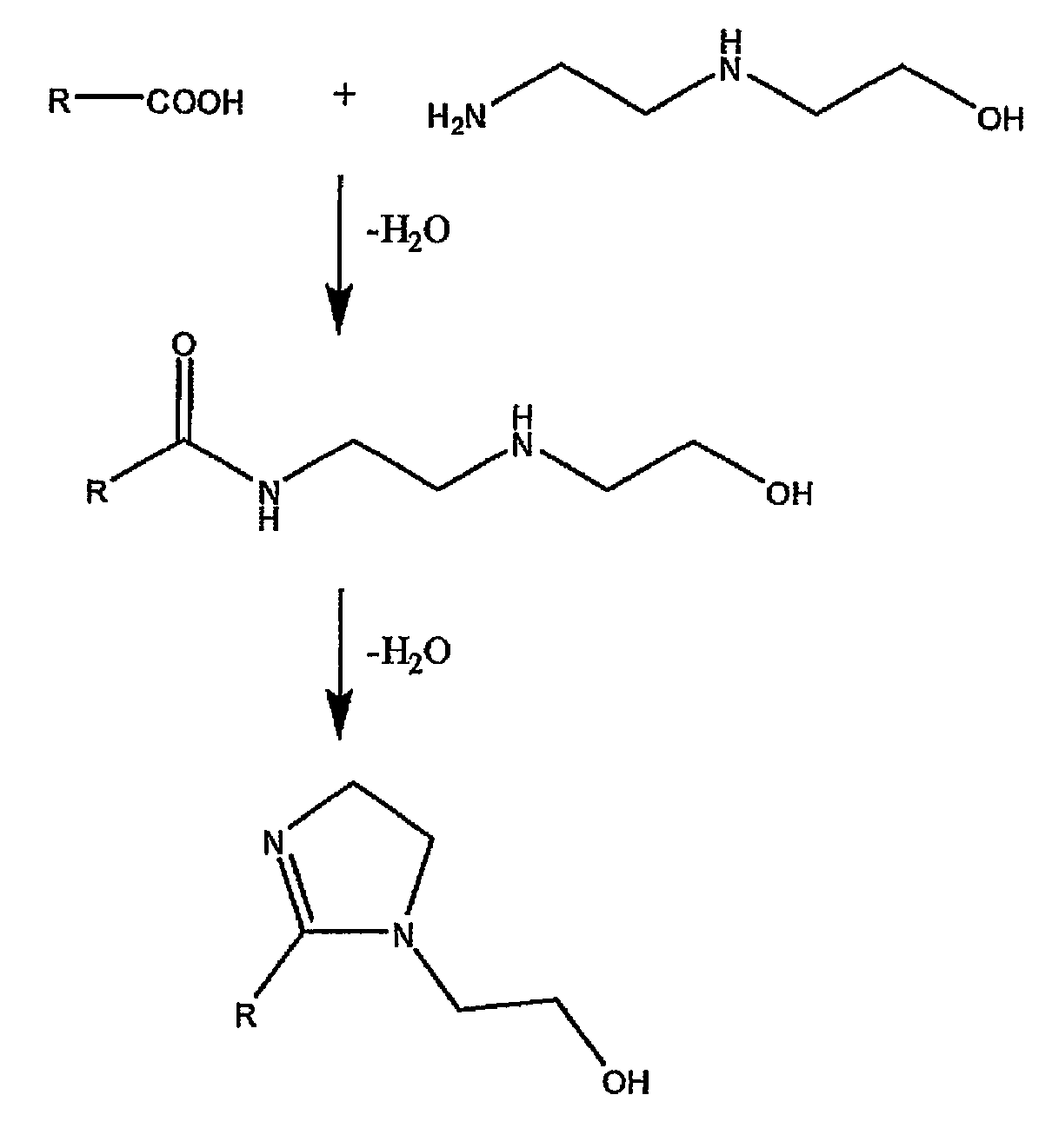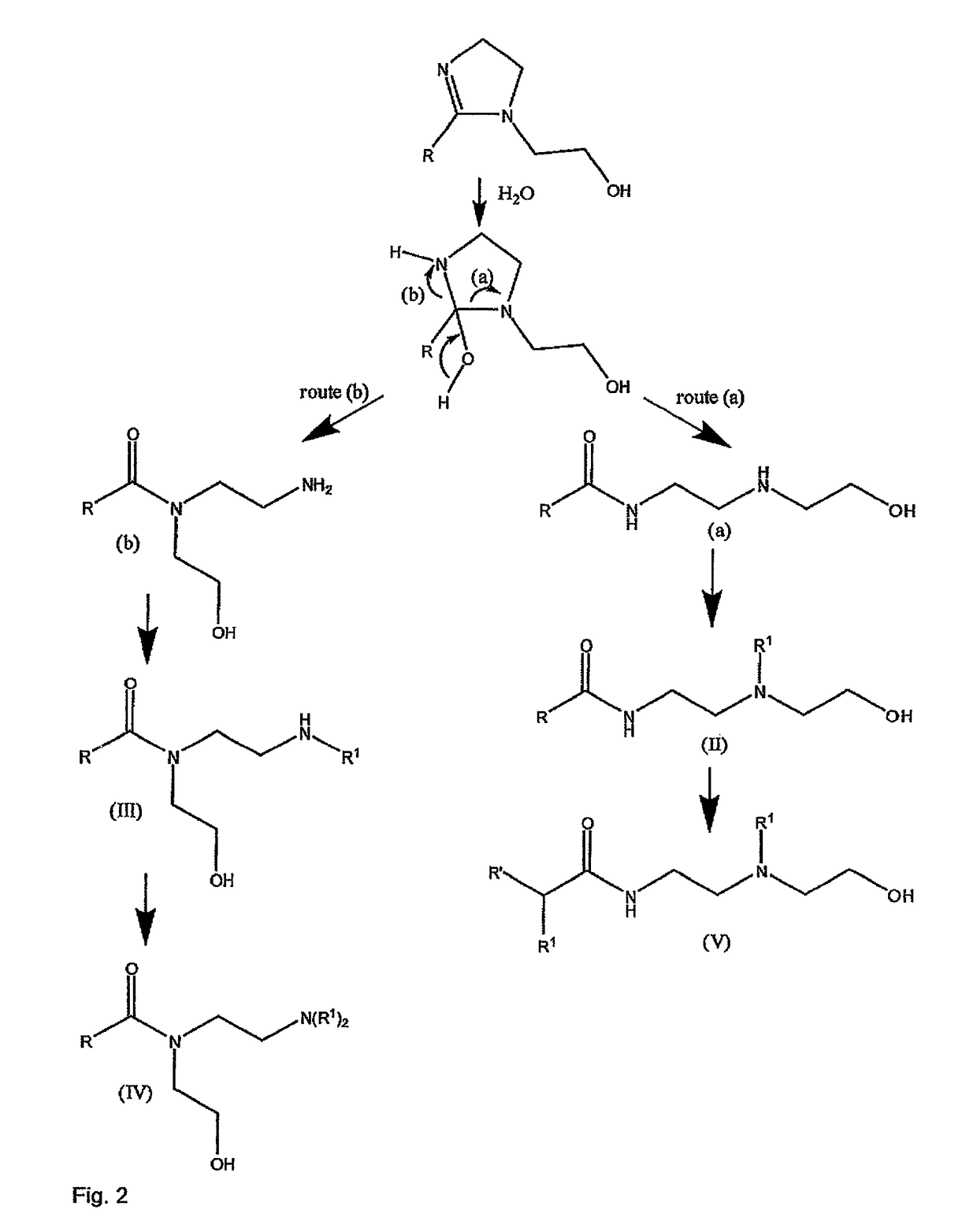Method and composition for preventing corrosion of metal surfaces
a metal surface and composition technology, applied in the direction of transportation and packaging, wellbore/well accessories, containers, etc., can solve the problems of anaerobic corrosion, low oxygen level, corrosion inhibitors, etc., and achieve the effect of reducing, inhibiting or preventing corrosion of a metal surfa
- Summary
- Abstract
- Description
- Claims
- Application Information
AI Technical Summary
Benefits of technology
Problems solved by technology
Method used
Image
Examples
example 1
CI Performance Data for Selected Amphoacetates and Amphosulfonates in the Absence of a Quaternary Ammonium Compound
[0175]Tables 3a and 3b show the results obtained for 3 amphoacetates, one amphosulfonate and two of the comparative compounds in LPR bubble test experiments using the two brine compositions (A and B) described above. In each of these experiments, the component under test was first prepared as a solution containing 40% dry-weight of the test chemical in a mixture of 50:50 isopropanol: water. 50 parts by weight of this solution was then combined with a further 45 parts by weight of 50:50 isopropanol: water and 5 parts by weight of an aqueous solution containing 40 parts by weight of sodium thiosulfate. Following a 2 hour pre-corrosion stage, the combined pre-blend was then added to the kerosene phase of the LPR Bubble Test apparatus using an addition rate calculated to provide 10 parts per million (ppm) of the test chemical, as a proportion of total fluids (kerosene plus ...
example 2
[0185]Each of the compositions described below were prepared. All compositions contain solvents—water, methylethylene glycol (MEG), ethylene glycol monobutyl ether (EGMBE) and / or ethylene diglycol (EDG) and are adjusted to contain approximately 20% wt corrosion inhibitor in each case. The proportion of amphoacetate to ammonium quaternary compound is generally 1:1 by weight except in GR285060-03 which contains approximately 1.75:1 amphoacetate to quaternary ammonium compound respectively. Unless otherwise stated, all of the compositions contain approximately 1.9 wt % of sulfur-containing compound.
[0186]
GR285043-01WtActivityComponentGenericWt %(20 g)(Equiv)MEGSolvent33.006.600.00EGMBESolvent11.002.200.00Mixture AAmphoacetate41.008.2017.63WaterSolvent11.002.200.00Na2S2O3 (47% soln)Sulfur-compound4.000.801.88100.0020.0019.51
[0187]
GR285043-02WtActivityComponentGenericWt %(20 g)(Equiv)MEGSolvent33.006.600.00EGMBESolvent11.002.200.00Mixture AAmphoacetate46.009.2019.78WaterSolvent10.002.000...
PUM
| Property | Measurement | Unit |
|---|---|---|
| concentration | aaaaa | aaaaa |
| temperature | aaaaa | aaaaa |
| electrode potential | aaaaa | aaaaa |
Abstract
Description
Claims
Application Information
 Login to View More
Login to View More - R&D
- Intellectual Property
- Life Sciences
- Materials
- Tech Scout
- Unparalleled Data Quality
- Higher Quality Content
- 60% Fewer Hallucinations
Browse by: Latest US Patents, China's latest patents, Technical Efficacy Thesaurus, Application Domain, Technology Topic, Popular Technical Reports.
© 2025 PatSnap. All rights reserved.Legal|Privacy policy|Modern Slavery Act Transparency Statement|Sitemap|About US| Contact US: help@patsnap.com



